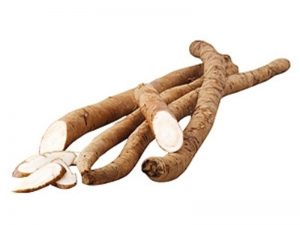| Class and Class No. | 3E (8) |
| Name | Ching Jen Hong |
| Year: | 2017-2018 |
| Chinese name: | 牛蒡子 |
| Family name: | Sunflower |
| Scientific name: | Arctium Lappa |
| Common name: | Greater burdock |
| 習性:
更大的牛蒡是兩年生植物,相當高,達3米(10英尺)。 |
Growth habit:
Greater burdock is a biennial plant, rather tall, reaching as much as 3 m (10 feet). |
| 葉:
它具有大而交替的簾狀葉,葉柄長且在下面具有短柔毛。 |
Leaf:
It has large, alternating, cordiform leaves that have a long petiole and are pubescent on the underside. |
| 花:
這些花是紫色的,分成球狀頭狀花序,團結在一起。 他們出現在7月至9月的夏季中旬。頭狀花序被由許多苞片製成的全苞包圍,每個苞片彎曲形成一個鉤子,使它們可以在動物的毛皮上長距離運送。 |
Flower:
The flowers are purple and grouped in globular capitula, united in clusters. They appear in mid-summer, from July to September. The capitula are surrounded by an involucre made out of many bracts, each curving to form a hook, allowing them to be carried long distances on the fur of animals.
|
| 果:
果實是瘦果; 他們很長,壓縮,短冠毛頭髮。 這些對人類,馬和狗都是潛在的危害。 尖細尖銳的冠毛毛很容易從瘦果頂部脫落,並被微微的微風攜帶 – 附著在皮膚,粘膜和眼睛上,可能導致嚴重的皮膚刺激,可能的呼吸系統表現和眼炎。 |
Fruit:
The fruits are achenes; they are long, compressed, with short pappus hairs. These are a potential hazard for humans, horses, and dogs. The minute, sharply-pointed, bristly pappus hairs easily detach from the top of the achenes and are carried by the slightest breeze – attaching to skin, mucous membranes, and eyes where they can cause severe dermal irritation, possible respiratory manifestations, and ophthalmia. |
| 性味功能:
牛蒡根經常被人為地著色成橙色,類似於胡蘿蔔。 牛蒡根也可以作為炸土豆片的口感和質地相似的炸食品,偶爾也可以作為天婦羅菜的配料。 |
Properties:
the burdock root is often artificially colored orange to resemble a carrot. Burdock root can also be found as a fried snack food similar in taste and texture to potato chips and is occasionally used as an ingredient in tempura dishes. |
| 主治:
幹牛蒡根(Bardanae radix)在民間醫學中被用作利尿劑,發汗劑和血液淨化劑。 19世紀的軼事報告表明,這種藥用植物也被Ojibwa部落使用,並且今天以Essiac茶中的一種成分的形式用於替代治療某些癌症。 作為油性浸漬劑,它是一些化妝品,香波和頭髮護理產品的組成部分。 大牛蒡的種子在中醫藥中尤其適用於皮膚病和感冒/流感配方,名為牛蒡子 |
Treats:
Dried burdock roots (Bardanae radix) are used in folk medicine as a diuretic, diaphoretic, and a blood purifying agent.[15] Anecdotal reports from the 19th century suggest that this medicinal plant has also been used by the Ojibwa tribe, and today, in form of an ingredient in Essiac tea for the alternative treatment of some cancers.[16] As an oily macerate, it is a component of some cosmetics, shampoos and hair care products. The seeds of greater burdock are employed in traditional Chinese medicine particularly for skin conditions and in cold/flu formulas, under the name niubangzi |
| 知道多一點點:
牛蒡根在中國被稱為牛蒡(niúbàng),被稱為gobō和韓國人uong(우엉),並在該地區被廣泛食用。 它在歐洲中世紀被作為蔬菜使用,但現在除了在意大利,巴西和葡萄牙,它被稱為bardana或“garduna”,它很少使用。 植物是為了它們苗條的根部而栽培的,它們長約1米長,2厘米長。 根在英國傳統上被用作草藥飲料蒲公英和牛蒡的調味品,其仍然是商業生產的。 |
More to learn:
Greater burdock root is known as niúbàng (牛蒡) in Chinese, which was borrowed into Japanese as gobō and Korean as ueong (우엉), and is widely eaten in the region. It was used in Europe during the Middle Ages as a vegetable, but now it is rarely used except in Italy, Brazil and Portugal, where it is known as bardana or “garduna”. Plants are cultivated for their slender roots, which can grow about 1 meter long and 2 cm across. The root was traditionally used in Britain as a flavouring in the herbal drink dandelion and burdock, which is still commercially produced. |
| (Beginner) | Q1. Where has Articum Lappa L been used around the world?
Answer: China, Korea, Japan and many places in Europe and some places of South America |
| (Elementary) | Q2. Describe the characteristics of the flower of Articum Lappa L.
Answer: The flowers are purple and grouped in globular capitula, united in clusters. They appear in mid-summer, from July to September. |
| (Advanced) | Q3. Describe the cultivation of Articum Lappa L.
Answer: It prefers a fresh, worked soil, rich in humus, and should be positioned in full sunlight. Burdock is very reactive to nitrogen fertilizer. Propagation is achieved through sowing the seeds midsummer. The harvest occurs three to four months after the seeding until late autumn, when the roots become too fibrous. |


